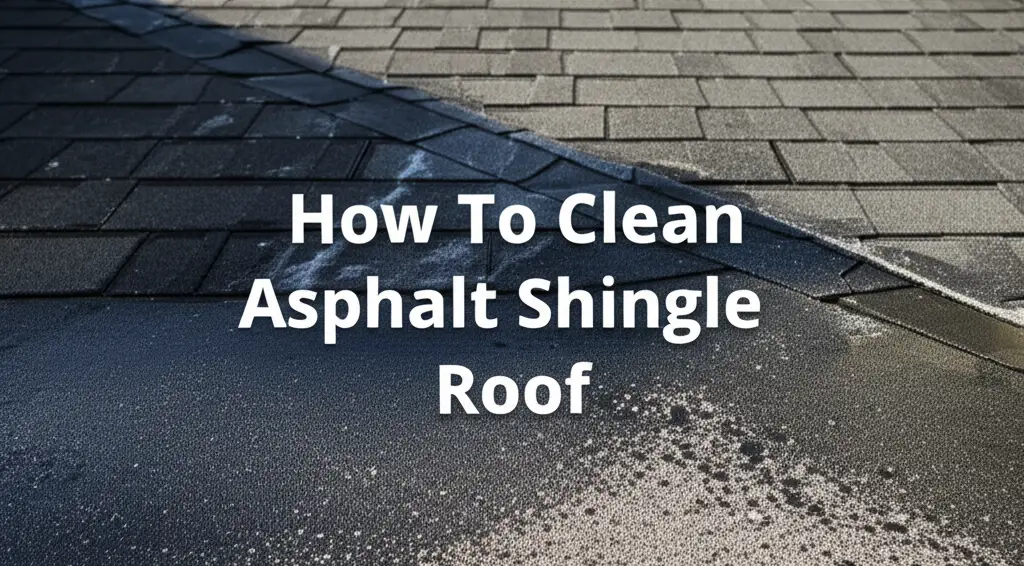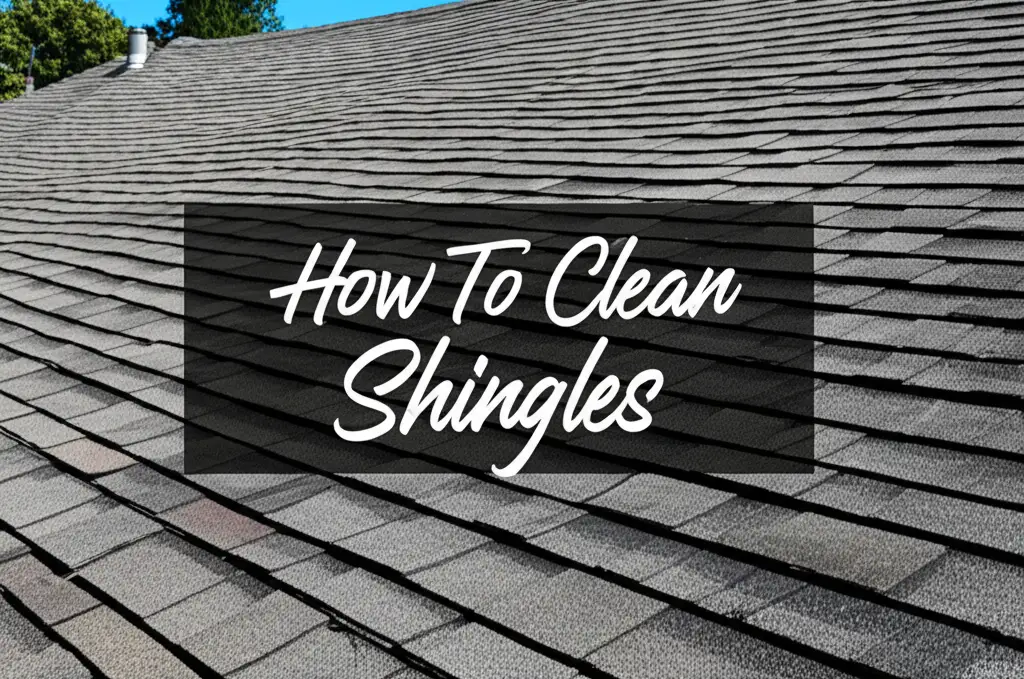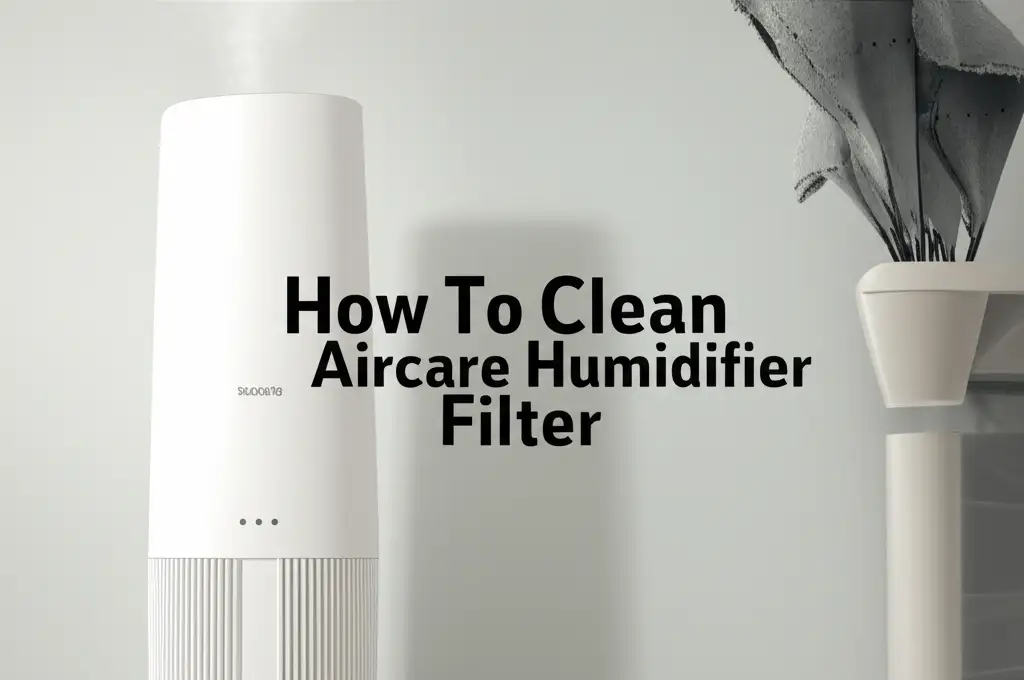· Home Maintenance · 13 min read
How To Clean Asphalt Shingle Roof

How To Clean Asphalt Shingle Roof Safely
Cleaning your asphalt shingle roof can seem like a big job. Yet, a clean roof looks better and lasts longer. You want to keep your home in top shape. Knowing how to clean asphalt shingle roof spots properly prevents damage. This guide shows you safe, effective ways to make your roof sparkle. We cover safety, methods, solutions, and upkeep.
Takeaway
Cleaning your asphalt shingle roof is a smart move for home upkeep. Here are the key steps:
- Prioritize Safety: Always use proper gear and stable ladders.
- Identify Stains: Know if you have algae, moss, or lichen.
- Choose Soft Washing: Never use high-pressure washers on shingles.
- Use Proper Solutions: Apply bleach-based or specialized roof cleaners carefully.
- Rinse Thoroughly: Wash off all cleaning agents to protect plants.
- Prevent Future Growth: Trim trees and consider zinc strips.
Cleaning an asphalt shingle roof involves applying a low-pressure chemical solution to remove algae, moss, and lichen, followed by a gentle rinse. This “soft wash” method protects the shingles from damage, unlike high-pressure washing, which can strip protective granules. Always prioritize safety and use appropriate cleaning agents.
Why Clean Your Asphalt Shingle Roof?
A dirty roof does more than look bad. It can cause real problems for your home. Black streaks, green moss, and fuzzy lichen often grow on asphalt shingles. These growths hold moisture against your roof. This moisture speeds up shingle wear. It can also cause shingles to curl or crack. This leads to costly repairs later.
Cleaning your roof removes these harmful growths. This extends the life of your asphalt shingles. It also keeps your home looking tidy and well cared for. A clean roof helps your home’s curb appeal. You protect your investment by cleaning it. Regular cleaning means your roof works better for longer. It saves you money in the long run.
Moreover, certain growths like algae absorb sunlight. This makes your roof hotter. A hotter roof can increase your home’s cooling costs. Removing these dark stains helps your roof reflect more sunlight. This keeps your attic and home cooler. Thus, cleaning your asphalt shingle roof has both aesthetic and practical benefits. It is a vital part of home maintenance.
Safety First: Preparing for Roof Cleaning
Cleaning a roof is dangerous. You must put safety above all else. Before you start, check the weather. Pick a dry, calm day. Avoid windy conditions or rain. Ensure your ladder is sturdy and placed on firm, level ground. Use a ladder stabilizer or stand-off. This makes the ladder more stable and keeps it from resting directly on your gutters.
Wear proper safety gear. This includes non-slip shoes, safety glasses, and gloves. A harness and rope system gives extra protection against falls. If your roof has a steep pitch, consider hiring a professional. They have specialized gear and training. Always tell someone you plan to clean the roof. This way, someone knows your whereabouts.
Prepare the area around your home. Cover plants, shrubs, and outdoor furniture with tarps. This protects them from cleaning solutions. Wet down nearby vegetation before and after cleaning. This dilutes any runoff. Disconnect downspouts if they drain into rain barrels. This stops chemicals from entering your water supply. Safety is not an option; it is a must when working on a roof. For more tips on working on your roof, you might find this guide helpful: how to clean dryer vent on roof.
Understanding Asphalt Shingle Roof Stains
Asphalt shingles can get various unsightly stains. Each type of stain comes from a specific growth. Knowing what you are dealing with helps you clean it better.
Black Streaks: Gloeocapsa Magma
The most common stain is black streaks. These streaks come from a type of algae called Gloeocapsa magma. This algae feeds on the limestone filler in asphalt shingles. It spreads quickly. These black stains look bad. They also absorb sunlight, making your roof hotter. This can increase your energy bills.
Green Patches: Moss
Moss often appears as soft, green patches. It prefers shaded, damp areas of your roof. Moss holds water against the shingles. This causes moisture damage over time. It can lift shingles, making them weak. This allows water to get under the roof. Moss growth also makes your roof slick and dangerous.
Crusty Growths: Lichen
Lichen looks like crusty, flat patches. It can be green, gray, or even orange. Lichen is a mix of algae and fungus. It attaches very strongly to the shingle surface. Its roots grow into the shingle’s granules. Trying to scrape lichen off can pull off these protective granules. This reduces the shingle’s lifespan.
Identifying these growths is important. Black streaks need different attention than deeply rooted lichen. For example, using a general cleaner might help with algae. Lichen often needs more specific treatments. Understanding the stain helps you choose the correct cleaning method. This ensures effective and safe stain removal.
Soft Washing vs. Pressure Washing: The Right Method
When cleaning an asphalt shingle roof, the method matters. The wrong method can destroy your roof. Always choose soft washing. Never use a high-pressure washer on your shingles.
The Dangers of Pressure Washing
Pressure washing might seem fast and powerful. However, it is very harmful to asphalt shingles. High pressure blasts off the protective granules on your shingles. These granules shield your roof from UV rays and provide color. Once they are gone, your shingles will break down quickly. This leads to premature roof failure. High pressure can also force water under the shingles. This causes leaks and rot in your roof deck. You can void your roof warranty by using a pressure washer. Avoid this method at all costs.
Why Soft Washing is Preferred
Soft washing uses low pressure. It relies on cleaning solutions to do the work. The pressure used is similar to a garden hose. The cleaning solution breaks down algae, moss, and lichen. After the solution works, you gently rinse it away. This method removes stains without damaging shingles. It keeps the protective granules intact. Soft washing is safe for asphalt shingles. It is the only recommended way to clean them.
A basic soft wash process involves several steps. First, you apply the cleaning solution. You let it sit for a specific time. Then, you rinse the roof gently. This process cleans the roof without force. It is effective and safe. Many roof cleaning services use soft washing. If you hire someone, ensure they use this method. Soft washing protects your roof and extends its life.
Effective Cleaning Solutions for Asphalt Shingles
Choosing the right cleaning solution is crucial for your asphalt shingle roof. The goal is to kill growths without harming the shingles or surroundings. Several options work well.
Bleach-Based Solutions
One common and effective solution is a bleach and water mix. Use oxygen bleach or household bleach. Mix one part bleach with one part water. For example, five gallons of water with five gallons of bleach. Add a small amount of liquid laundry detergent. This helps the solution stick to the roof. Bleach kills algae, moss, and lichen. It also brightens the roof. Remember to protect plants and grass by wetting them down before applying the solution. Always wear protective gear, as bleach can irritate skin and eyes.
Commercial Roof Cleaners
Many companies sell specialized roof cleaning products. These products are often bleach-free. They use other chemicals to kill growths. Follow the manufacturer’s instructions carefully. Some commercial cleaners are concentrates. You mix them with water. Others are ready-to-use. These products are often safer for plants and pets. They can be more expensive than DIY bleach solutions. However, they offer a convenient option. They are formulated to be safe for roof materials.
Eco-Friendly Options
For those preferring a greener approach, some eco-friendly solutions exist. Vinegar can kill mold and mildew, but it is less effective on stubborn algae or lichen. You can try a mix of white vinegar and water. Use one part vinegar to one part water. This may require multiple applications. You may also find specific commercial products labeled “eco-friendly” or “plant-safe.” Always test a small area first. While vinegar is natural, its acidic nature could affect roof components over time. Use it with caution. For more about natural cleaning, consider reading about how to clean mold with vinegar or how to clean with vinegar and baking soda.
No matter the solution, always rinse thoroughly. Leaving chemicals on your roof can cause damage. It can also harm your landscaping. A good rinse is key for a clean, safe outcome.
Step-by-Step Guide: Cleaning Your Asphalt Shingle Roof
Cleaning your asphalt shingle roof needs a clear plan. Follow these steps for a safe and effective clean.
Prepare the Area:
- Protect surrounding plants. Wet down all shrubs, flowers, and grass around your home.
- Cover any sensitive plants or outdoor items with tarps.
- Disconnect rain barrels from downspouts.
- Ensure pets and children stay away from the work zone.
Gather Your Tools:
- Sturdy ladder with stand-off stabilizers.
- Safety gear: non-slip shoes, safety glasses, gloves, harness (if needed).
- Garden hose with a spray nozzle.
- Low-pressure pump sprayer (garden sprayer).
- Your chosen cleaning solution (bleach mix or commercial cleaner).
Apply the Cleaning Solution:
- Pour your cleaning solution into the pump sprayer.
- Start at the top of your roof. Work your way down.
- Apply the solution evenly. Do not saturate the roof. A fine mist is usually enough.
- Focus on stained areas, but cover the entire surface to prevent new growth.
- Avoid spraying walls or windows.
- Work in small sections if your roof is large.
Let the Solution Work:
- Allow the cleaning solution to sit on the roof. The time depends on the product and stain severity.
- For bleach solutions, 15-20 minutes is common.
- Do not let the solution dry on the roof. If it starts to dry, mist it with water.
- You will see the stains start to fade or disappear. Moss and lichen might turn white or yellow.
Rinse the Roof:
- Rinse the roof with a garden hose at low pressure.
- Start from the top ridge and work downwards.
- Rinse thoroughly. Ensure all cleaning solution is gone.
- Direct the runoff away from plants as much as possible.
- Rinse plants and grass again during and after the roof rinse. This dilutes any chemical residue.
Post-Cleaning Care:
- Moss and lichen might not fall off immediately. They will loosen and wash away with rain over time.
- Inspect your roof for any missed spots. You can re-apply solution to stubborn areas.
- Clean up all tools and tarps.
- Recheck your landscaping for any chemical splash.
Following these steps helps you clean your asphalt shingle roof safely. It provides a clean roof without causing damage.
Preventative Measures and Routine Maintenance
Cleaning your asphalt shingle roof is one step. Keeping it clean is another. Taking preventative actions saves you work later. Regular maintenance helps your roof last longer.
Trim Overhanging Trees
Trees hanging over your roof are a major cause of stains. They drop leaves, twigs, and sap. This debris collects on the roof. It traps moisture and creates shade. These conditions are perfect for algae, moss, and lichen to grow. Trim branches so they are at least 10 feet away from your roof. This reduces debris buildup. It also increases sunlight exposure. More sun helps keep the roof dry. Less shade means less growth.
Install Zinc or Copper Strips
Consider installing zinc or copper strips along your roof ridge. These metal strips slowly release tiny particles. When it rains, these particles wash down the roof. They create an environment that inhibits algae, moss, and lichen growth. This is a passive, long-term solution. It helps keep your roof clean for years. These strips are often installed under the ridge cap. They are not highly visible. This method is effective in many climates.
Regular Roof Inspection
Inspect your roof twice a year. Check it in spring and fall. Look for signs of new growth. Check for damaged shingles or debris. Early detection helps you address problems before they get big. You can gently sweep off loose debris. Use a soft brush for small moss spots before they spread. Regular checks mean small issues do not become large, expensive repairs.
Maintain Gutters
Clean your gutters regularly. Clogged gutters cause water to back up. This water can overflow and sit on your roof edges. Standing water promotes growth on shingles. Clear gutters allow water to drain properly. This keeps your roof drier. It helps prevent growth along the eaves.
Professional Help
Sometimes, the job is too big or too risky. If your roof is very steep or has extensive growth, hire a professional. They have the right equipment and experience. They can safely clean your asphalt shingle roof. They also know how to protect your landscaping. Professional cleaning ensures a thorough job without personal risk. It is a smart investment for tricky situations. Taking these steps protects your roof. It keeps your asphalt shingles clean and in good condition.
FAQ Section
Is pressure washing safe for asphalt shingles?
No, pressure washing is not safe for asphalt shingles. High pressure can strip off the protective granules, which are essential for the shingle’s lifespan. It can also force water under the shingles, leading to leaks and structural damage. Always use a soft wash method for asphalt roofs.
How often should I clean my asphalt shingle roof?
The frequency depends on your local climate and surrounding vegetation. Generally, cleaning your asphalt shingle roof every 3-5 years is a good practice. If you notice significant algae, moss, or lichen growth sooner, then it’s time for a cleaning. Regular inspection helps determine the right schedule.
What causes black streaks on asphalt shingles?
Black streaks on asphalt shingles are caused by a type of algae called Gloeocapsa magma. This airborne algae feeds on the limestone filler in the shingles. It spreads quickly in humid conditions. These streaks are unsightly and can absorb heat, making your home less energy efficient.
Can I clean my roof myself, or should I hire a professional?
You can clean your roof yourself if you are comfortable with heights and have the right safety gear. However, roof cleaning can be dangerous. If your roof is very steep, high, or has extensive growth, hiring a professional roof cleaner is safer. Professionals have specialized equipment and experience.
Will cleaning my roof damage my landscaping?
Cleaning solutions can harm plants if not managed properly. Always wet down surrounding plants thoroughly before applying any cleaning solution. Keep wetting them during rinsing to dilute runoff. Covering sensitive plants with tarps also helps protect them. Choose plant-safe cleaners if available.
Conclusion
Cleaning your asphalt shingle roof is a vital part of home care. You protect your biggest asset, your home, by doing this work. We covered how to clean asphalt shingle roof stains safely. We looked at choosing the right tools and solutions. Remember to prioritize safety always. Use low-pressure soft washing methods. This protects your shingles from damage.
Regular cleaning prevents costly repairs down the road. It keeps your home looking its best. Taking preventative steps, like trimming trees and installing metal strips, extends these benefits. Do not let dirt and growth ruin your roof. Act now to preserve your roof’s life and appearance. Your roof protects your home; you can protect your roof.
- asphalt roof cleaning
- shingle maintenance
- roof algae removal
- moss on roof
- soft wash roof cleaning
- DIY roof care




